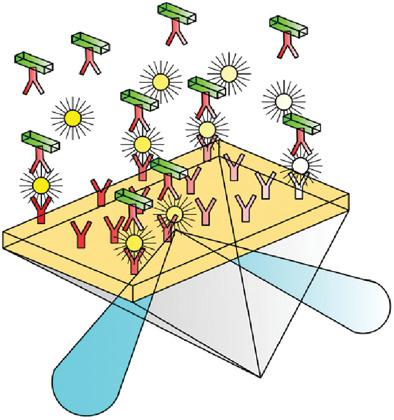当前位置:
X-MOL 学术
›
Adv. Theory Simul.
›
论文详情
Our official English website, www.x-mol.net, welcomes your feedback! (Note: you will need to create a separate account there.)
Gold Nanorod Assisted Enhanced Plasmonic Detection Scheme of COVID‐19 SARS‐CoV‐2 Spike Protein
Advanced Theory and Simulations ( IF 3.3 ) Pub Date : 2020-10-04 , DOI: 10.1002/adts.202000185 Chandreyee Manas Das 1, 2 , Yan Guo 3 , Guang Yang 2 , Lixing Kang 1, 2 , Gaixia Xu 4 , Ho-Pui Ho 5 , Ken-Tye Yong 1, 2
Advanced Theory and Simulations ( IF 3.3 ) Pub Date : 2020-10-04 , DOI: 10.1002/adts.202000185 Chandreyee Manas Das 1, 2 , Yan Guo 3 , Guang Yang 2 , Lixing Kang 1, 2 , Gaixia Xu 4 , Ho-Pui Ho 5 , Ken-Tye Yong 1, 2
Affiliation

|
The beautiful interplay between light and matter can give rise to many striking physical phenomena, surface plasmon resonance (SPR) being one of them. Plasmonic immunosensors monitor refractive index changes that occur as a result of specific ligand–analyte or antibody–antigen interactions taking place on the sensor surface. The coronavirus disease (COVID‐19) pandemic has jeopardized the entire world and has resulted in economic slowdown of most countries. In this work, a model of a sandwich plasmonic biosensor that utilizes gold nanorods (Au NRs) for the detection of COVID‐19 SARS‐CoV‐2 spike protein is presented. Simulation results for different prismatic configurations for the basic Kretschmann layout are presented. It is found that a BK7 glass prism‐based SPR sensor has an incremental sensitivity of 111.11 deg RIU−1. Additionally, using Comsol Multiphysics the electric field enhancement observed for various aspect ratios and layouts of Au NRs are discussed in depth.
中文翻译:

金纳米棒辅助的 COVID-19 SARS-CoV-2 刺突蛋白的增强等离子体检测方案
光与物质之间美妙的相互作用可以产生许多引人注目的物理现象,表面等离子共振(SPR)就是其中之一。等离子体免疫传感器监测由于传感器表面发生的特定配体-分析物或抗体-抗原相互作用而发生的折射率变化。冠状病毒病(COVID-19)大流行危及整个世界,并导致大多数国家的经济放缓。在这项工作中,提出了一种利用金纳米棒 (Au NR) 检测 COVID-19 SARS-CoV-2 刺突蛋白的夹心等离子体生物传感器模型。给出了基本 Kretschmann 布局的不同棱柱配置的仿真结果。结果发现,基于 BK7 玻璃棱镜的 SPR 传感器的增量灵敏度为 111.11 deg RIU -1。此外,使用 Comsol Multiphysics 深入讨论了在不同纵横比和 Au NR 布局下观察到的电场增强。
更新日期:2020-11-06
中文翻译:

金纳米棒辅助的 COVID-19 SARS-CoV-2 刺突蛋白的增强等离子体检测方案
光与物质之间美妙的相互作用可以产生许多引人注目的物理现象,表面等离子共振(SPR)就是其中之一。等离子体免疫传感器监测由于传感器表面发生的特定配体-分析物或抗体-抗原相互作用而发生的折射率变化。冠状病毒病(COVID-19)大流行危及整个世界,并导致大多数国家的经济放缓。在这项工作中,提出了一种利用金纳米棒 (Au NR) 检测 COVID-19 SARS-CoV-2 刺突蛋白的夹心等离子体生物传感器模型。给出了基本 Kretschmann 布局的不同棱柱配置的仿真结果。结果发现,基于 BK7 玻璃棱镜的 SPR 传感器的增量灵敏度为 111.11 deg RIU -1。此外,使用 Comsol Multiphysics 深入讨论了在不同纵横比和 Au NR 布局下观察到的电场增强。



























 京公网安备 11010802027423号
京公网安备 11010802027423号